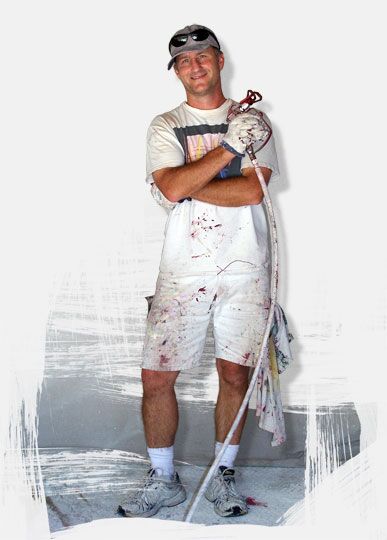The Ten Essentials:
- 3-inch Angle Tip Paint Brush
- Roller handle
- Multipurpose painter's tool
- Roller pole
- Hand masker
- Dripless caulk gun
- Razor knife
- Paint scraper
- Drop cloth
- Tool bucket and stool combo
Ready to invest in some essential painting equipment? Good choice! Whether you are a serious DIY painter or somebody who takes on the occasional painting project around the house, these ten pieces of equipment are the essentials you need to get the job done right!
Instructions
All professional painters know that getting excellent results requires the proper equipment. I consider these ten pieces of house painting equipment to be essential to almost every paint job--interior or exterior.
1. Purdy 3-inch Angular Paint Brush
This paint brush is a great choice for almost all painting situations. When properly cleaned and stored it will last many years. For trim painting, a 2.5-inch Purdy brush is another good option, just slightly smaller.
2. Wooster roller handle
This isn't the most expensive roller handle Wooster sells, but it's not the cheapie, either. It's solid, spins smoothly, and will last for several jobs if you take care of it and clean it well. It helps to have a couple of them on hand.
3. Red Devil multipurpose painter's tool
You won't find many professional painters who don't carry this with them every day. The hammerhead handle works well to pound in errant nails as you go. This tool is also handy for opening paint cans, both one-gallon and five gallon buckets (use the sharp blade to cut the plastic on these). The curved part of the blade is meant for squeezing the paint out of rollers and getting it back into the paint can. This tool cal also be used for scraping paint, although I prefer a dedicated paint scraper for that (see below).
4. Wooster Sherlock roller pole
I prefer roller poles that lock into place rather than the twisty type. A 2-4 foot extendable Sherlock pole is an invaluable tool for all DIY painters. If you have vaulted ceilings or exterior cornerboards to roll, consider purchasing a 4-8 foot Sherlock pole.
5. 3M hand masker
These guys are a little spendy, especially when you factor in the metal blade, but you won't find a more effective tool for keeping paint off surfaces where you don't want it. Aesthetics aside, when you consider the potential damage you can do by not keeping paint off expensive surfaces like tile and hardwood, a hand masker is well worth the money. It will last forever as long as you don't stomp on it.
6. Hyde Tools paint scraper
A good, hefty scraper with a reversible blade is crucial when you have a lot of scraping to do. I like to team this scraper up with a 1-inch version of the same tool and a 1-inch putty knife. With those three tools in hand, I feel ready to tackle even the most nightmarish scraper jobs (as long as I bring my radio along to keep me sane).
7. Dripless caulk gun
If you don't go dripless, your caulk tube will discharge a messy little worm of caulk every time you set it down for a minute. Get a gun with the wire poker so you can clear the tip of the caulk tube.
8. Razor knife
You'll need one of these to cut the tip off your caulk tube, but more importantly it's the tool you need when taping and putting plastic on windows and doors before painting. Use it to trim the painter's plastic, and also to trim blue tape on window glass.
9. Drop cloth
Don't get those cheap plastic drop cloths. Invest in a good quality canvas drop cloth or three. A 9' x 12' drop cloth is very handy, as are 12' x 15' and 4' x 12' sizes.
10. Stool and toolbox combo
This isn't really essential, but I bought one years ago and it's one of the handiest tools I've ever had. I take it to every job and it's great for getting a little extra extension out of your legs, storing extra equipment that you don't want to put in your pockets, and setting your paint can on when brushing trim. I never go to a paint job without this tool box.





